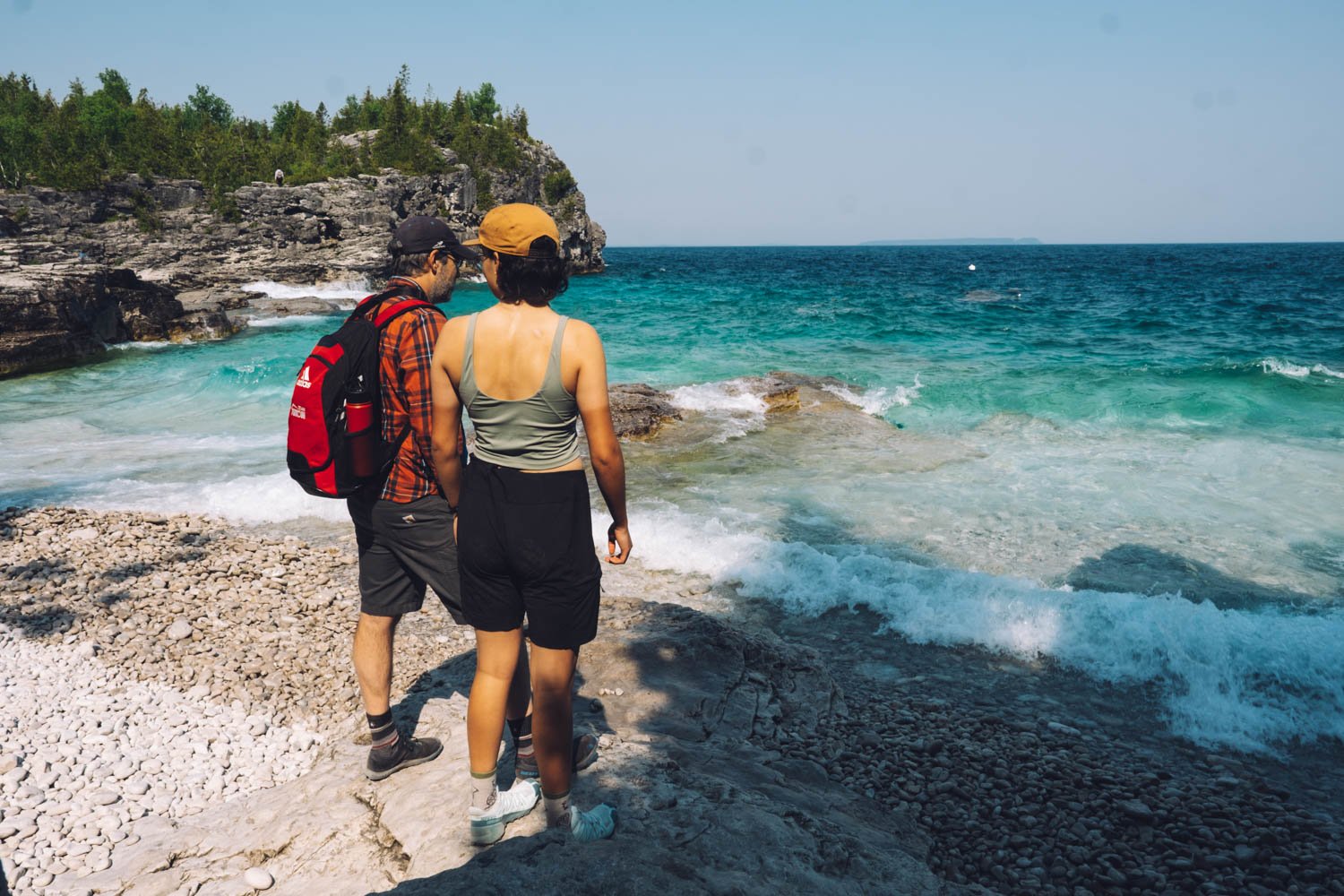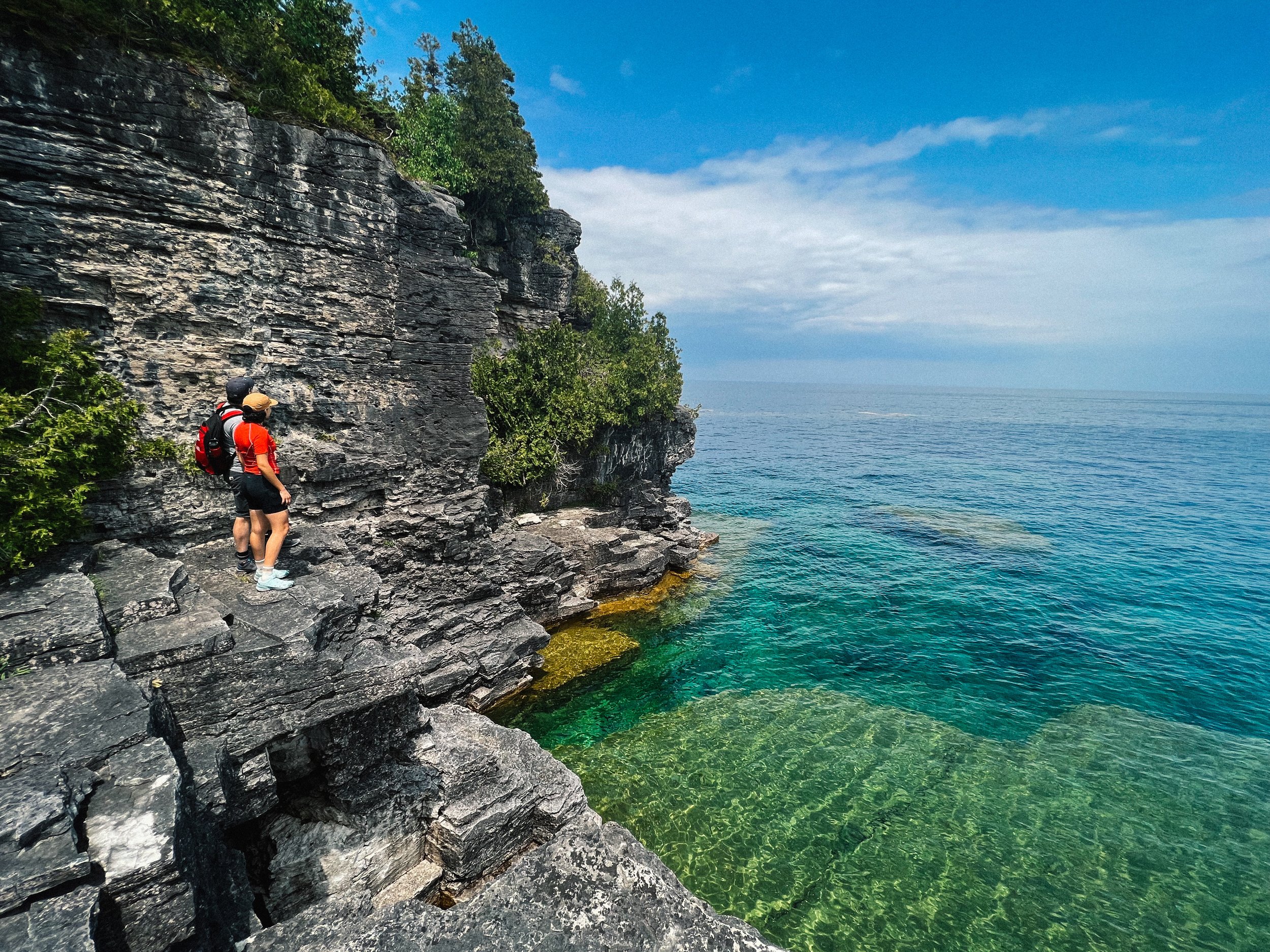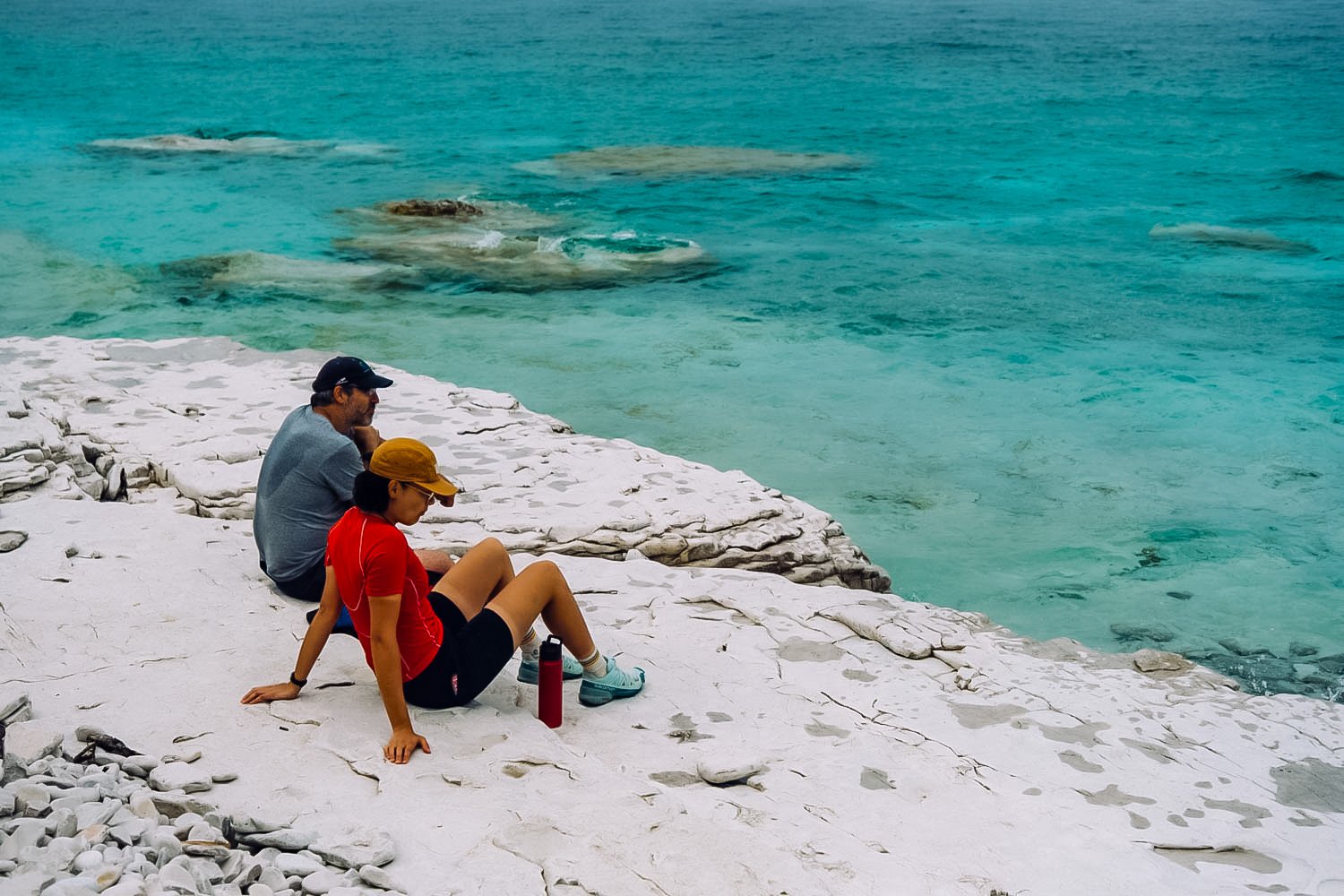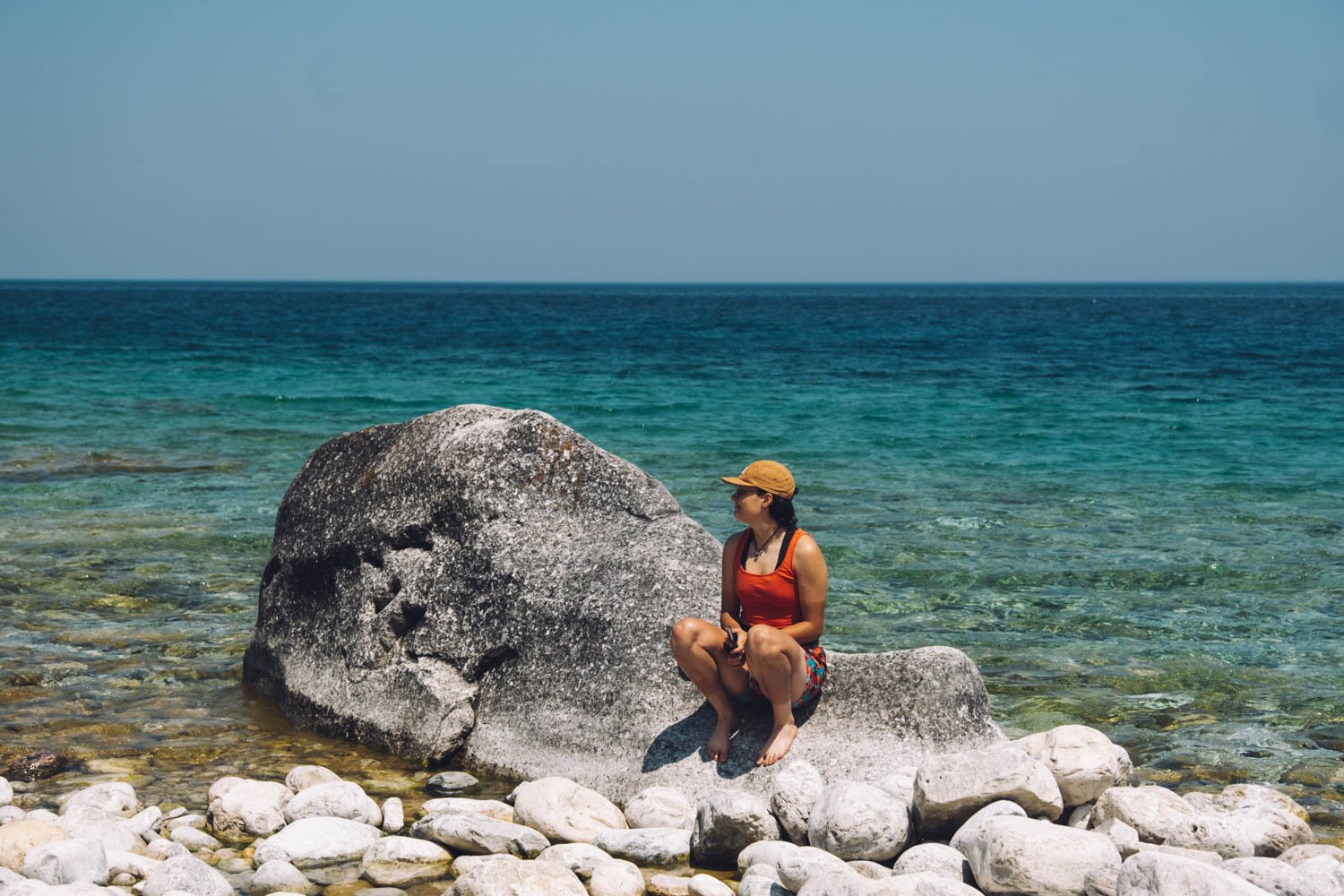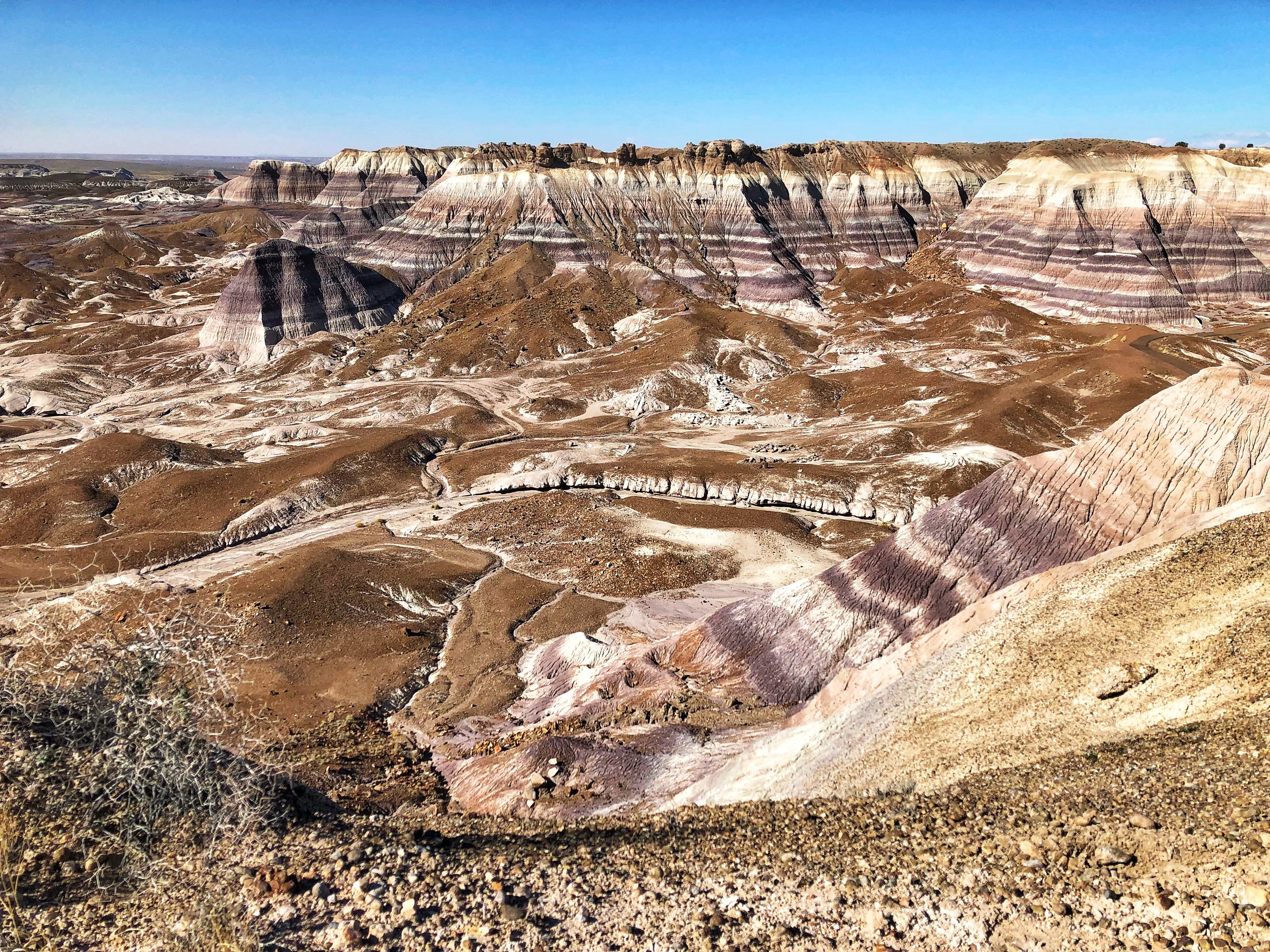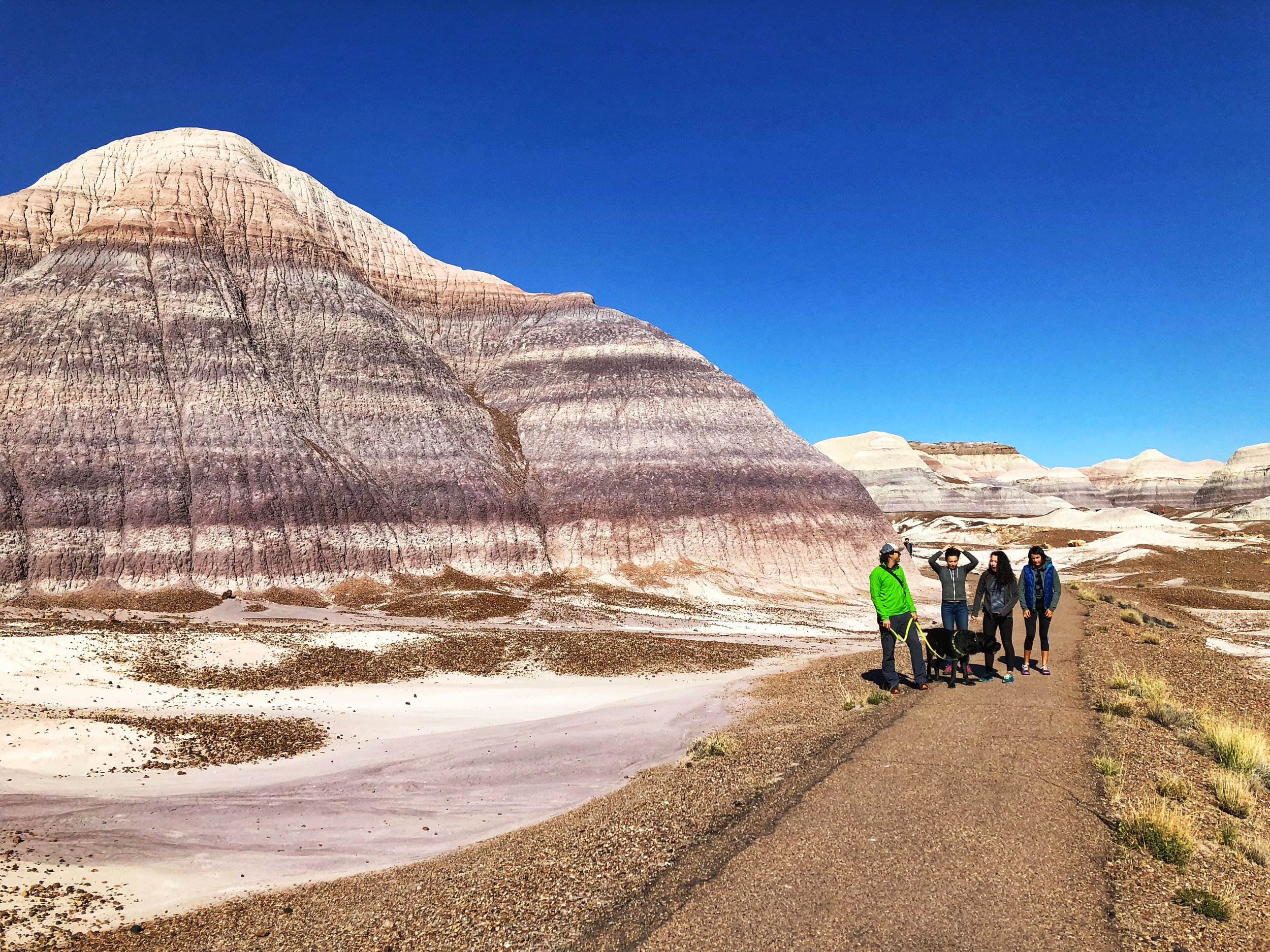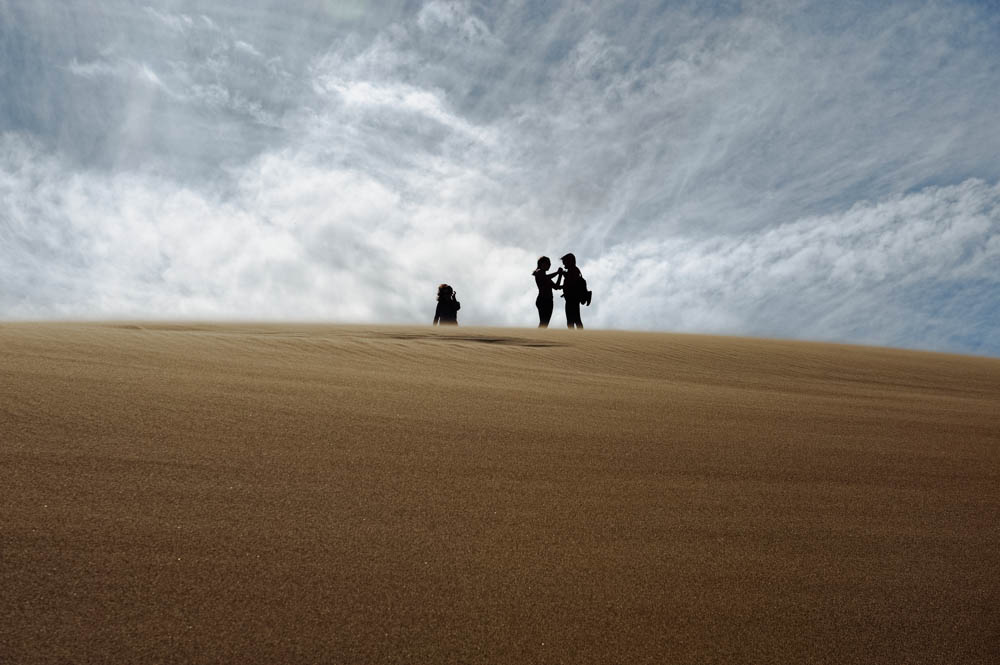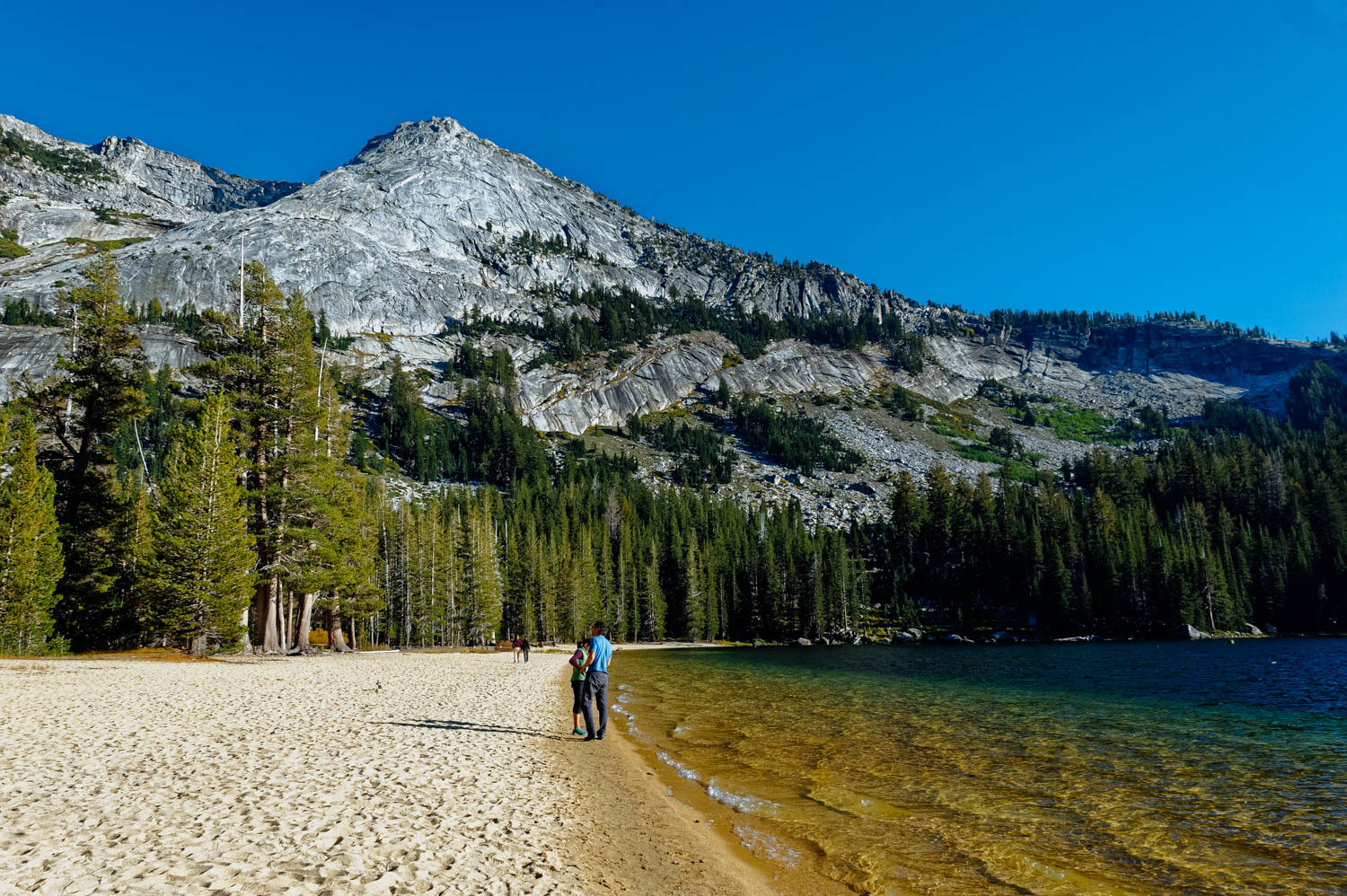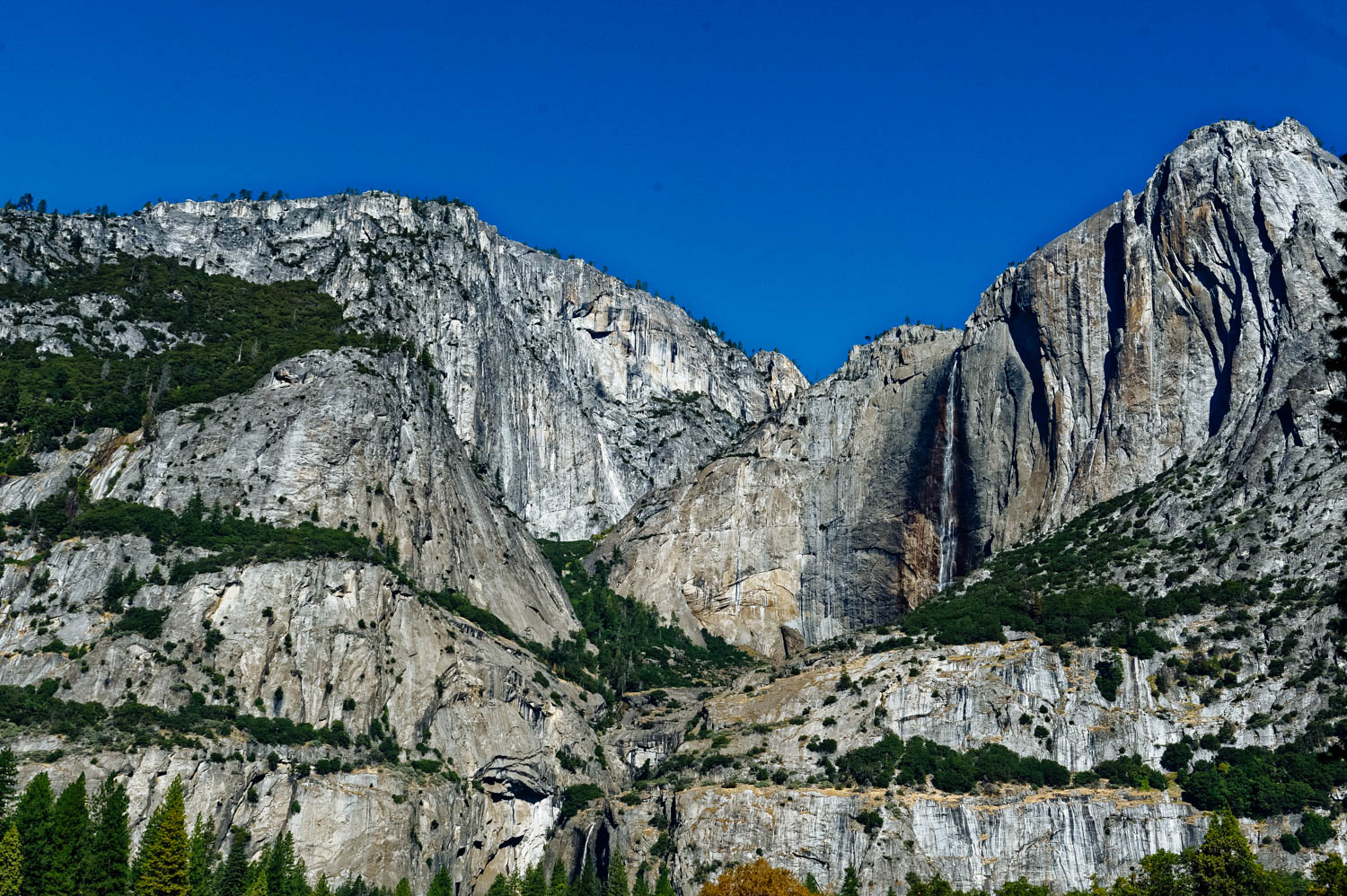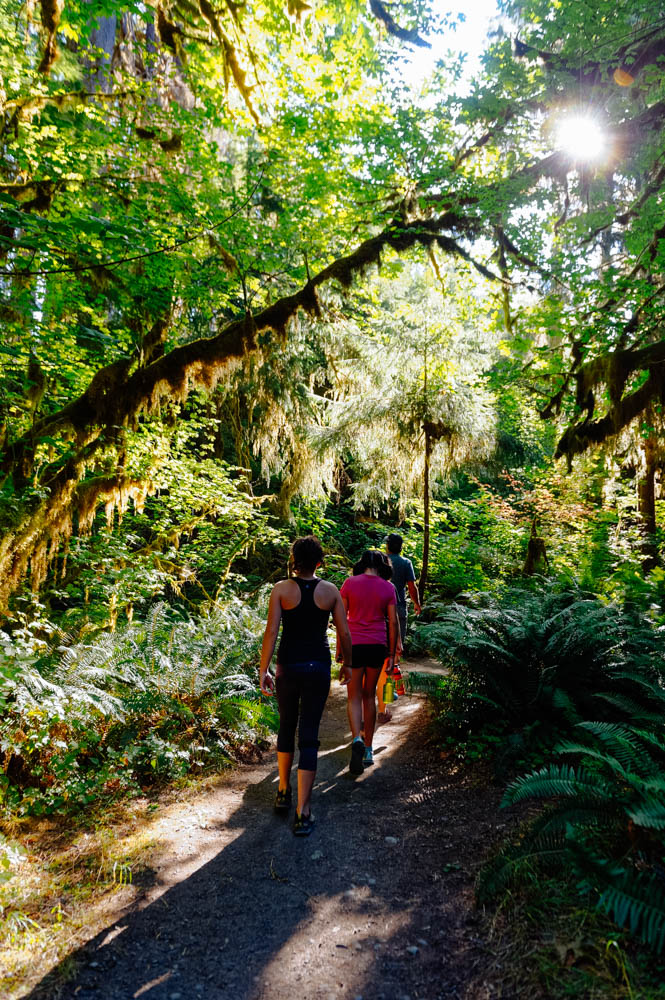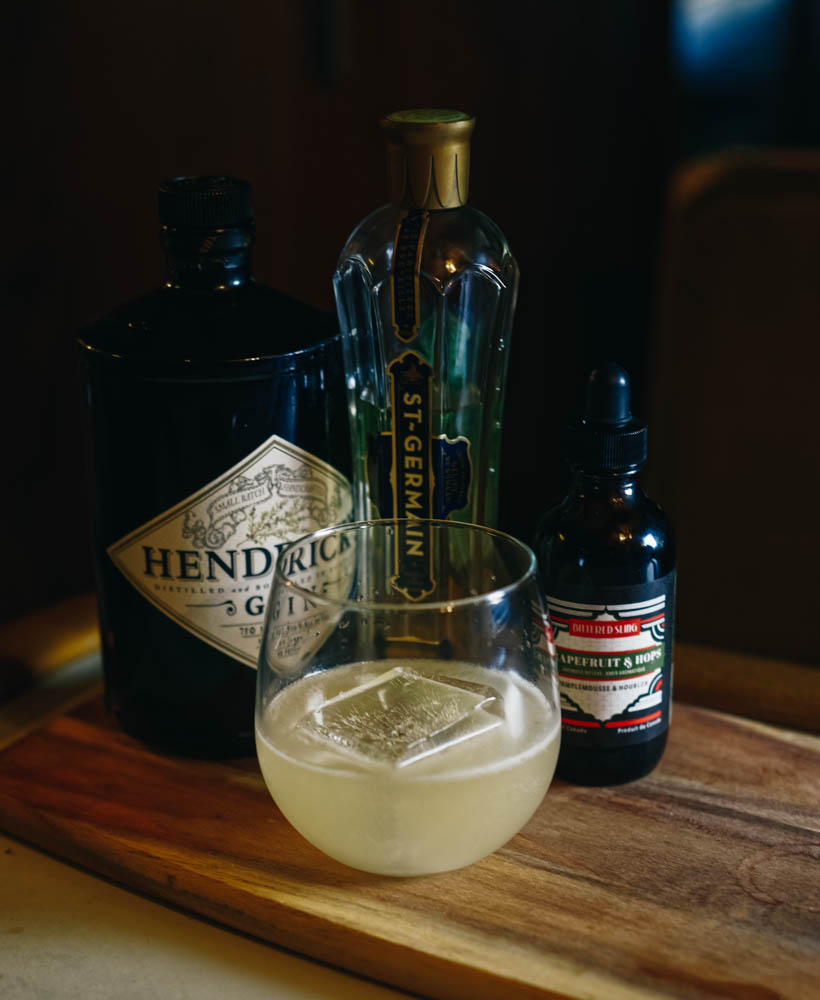Longer hikes in the Bruce Peninsula, Ontario
The beautiful beach at Halfway Log Dump.
Indian Head Cove, near the Grotto
The Bruce Peninsula National Park is another place where you have to reserve months in advance to snatch a campsite. The campsites might only be $23 per night, but don’t be fooled, you have to pay extra for the entry fees and extra for a tow vehicle. It’s pricey for an unserviced campsite. The big plus is that you don’t need to reserve and pay for a parking spot (and be limited to 4 hour slots only) to hike to the Grotto (the most popular attraction everybody wants to see).
Indian Head Cove near the Grotto
Rocky Shore Beach. Day 1 hike (see below).
Overhanging Point (a viewpoint on Day 1 hike).
Our goal was to hike everywhere from the campsite. Since we had wanted to visit the area for a long time, we reserved 4 nights during the week at the beginning of June and the campground was almost empty. Needless to say, the place is a zoo in the high season. Expect to see stupid behaviors and natural selection in action at the Grotto - 15-20 minutes will likely be plenty and you will desperately want to leave.
Halfway Rocky Point (at the beginning of Day 2 hike)
Unfortunately, there isn’t much info on longer hike options, so we created our own. That’s mostly why I’m sharing this post. If, like us, you don’t like to sit around much, 3 nights will be plenty.
Very badly handdrawn indications of the hikes we did, but since they do not exist, I figured it’s better than nothing. Day 1 on the left and Day 2 on the right.
Day 1: Hike to the Grotto and continue to the left along the coast on the Bruce Trail all the way to Rocky Point (Loon Lake). It’s a beautiful 10 km round-trip and we were by ourselves as soon as we left Boulder Beach. On the way back, take the Marr Lake Trail from Boulder Beach.
Day 2: Hike to the Grotto and take the other side (right) of the Bruce Trail all the way to Stormhaven backcountry campsites. On the way back, take Horse Lake trail to the campground.
Perfect lunch spot by the water at Stormhaven backcountry campground (Day 2 hike)
Day 3: Go explore Halfway Log Dump. You have to drive there from the campground (20 min) and hike less than 1 km to the beach. From there, explore the coast. We went left (upper peninsula) and found a cool bouldering area. If you want to go for a longer hike, you could go right on the Bruce Trail (lower peninsula) and hike to High Dump backcountry campsite.
Halfway Dump Beach
Day 4: get out of there before the weekend crowd gets here.
P.S.: All those hikes require walking on cobble beaches and rocky (slippery) terrain.

